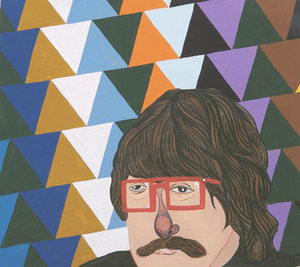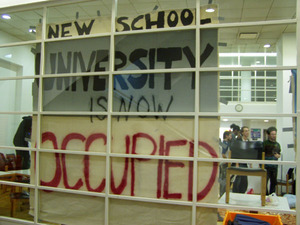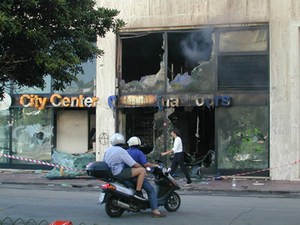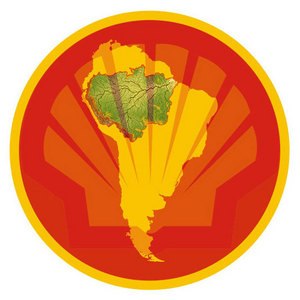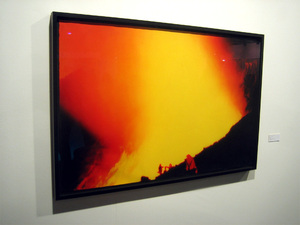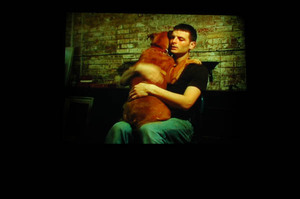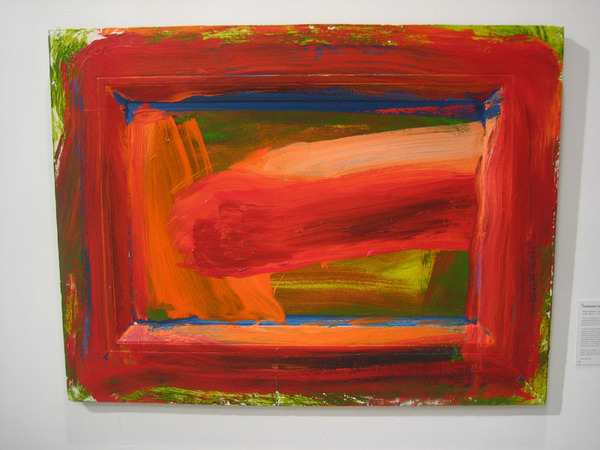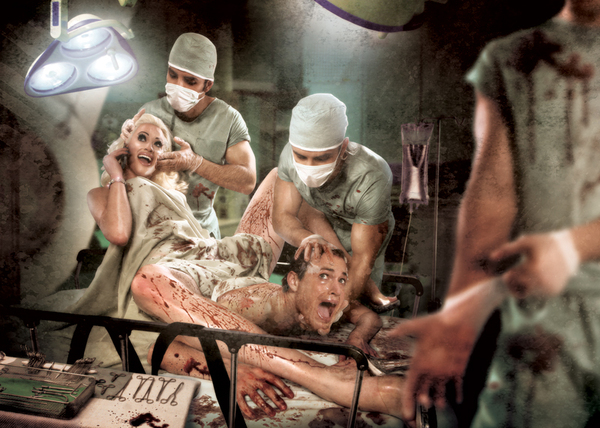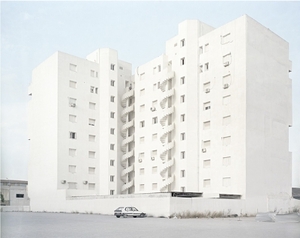This is an archive of the ArtCat Zine, 2007-2009. Please visit our new project, IDIOM.
December 2008
Rhizome, a pioneering organization dedicated to developing and supporting new media and electronic art, is soliciting funds for an end-of-year campaign to raise money "completely vital to our success amidst a particularly difficult year in the arts." The organization exists embedded within the New Museum and maintains a regular and popular new media art blog, regularly produces compelling events and exhibitions, maintaint the ArtBase database of online art, runs an attractive curatorial fellows program and much more. Rhizome needs to raise only another $4,000 before the end of the year to reach their campaign goal of $30,000, making it very affordable to help this important organization in a major way.
Art Fag City, another important voice of new media and electronic arts criticism on the web, is also running an end-of-year critical fundraiser – seeking to raise $6,000 before 1 January 2009 for the upkeep and maintenance of the one-woman blog for the next year to come. Art Fag City is a notable example of commercially unaffiliated and non-academic arts criticism in New York, surely a service to the entire city. In addition, AFC has partnered with Momenta Art in order to make all contributions possible write-offs.
Julie Fishkin, curator and co-founder of Metro Color Collision, has curated Papercut, an exhibition of drawings at HEIST Gallery, proprietor Talia Eisenberg's newish Essex Street outpost. Papercut manifests that perennial contemporary interest in drawing, a medium providing an economy both of means (production) and ends (sales). The show features a panoply of works thematically and technically diverse in style and aggressively priced to sell for the coming holidays -- the low-end work starting at $75. The gallery will be closing for the holidays on Tuesday, 23 December.
A story reported here yesterday, and widely across New York media -- the occupation of the New School Graduate Faculty Building by students -- seems to have been largely resolved with what students describe as a "major victory
over university administration."
ArtCal Zine will be suspending posting for the New Year at some point early in the next week. We'll resume in early January.
Posting notices to several listservs and web-based forums, a group of some 150 students have announced that they have, as of yesterday, 17 December, occupied the New School Graduate Faculty Building on 65 5th Avenue in Manhattan. The students in the meantime have authored a website with a list of demands -- most notably the resignation or "removal" of Bob Kerrey as president, James Murtha as executive vice president and the removal of Robert B. Millard from the Board of Trustees. Mr Millard is the non-executive chairman of L-3 Communications, a company contracted for interrogation work at Abu Grahib Prison in Iraq and recently taken to court by a group of four former Abu Ghraib inmates for being subjected to torture while in custody (Military personnel have already been tried on criminal charges and imprisoned for abuses at Abu Ghraib, but no civilians have yet seen court.)
The New School University, founded in 1919, has been known for its work to synthesize progressive American intellectual thought with critical Continental philosophy. It has since its founding aspired to be a site where cultural work is informed and enriched by politics. The New School is also home to The Vera List Center for Art and Politics, directed by Carin Kuoni. The Vera List Center has recently produced OURS: Democracy in the Age of Branding, an exhibition and event program on view through 1 February 2009.
Update: Coverage by the Times here, Gothamist here, the Voice here.
Update: Electronic Flux corporation has published an announcement of the occupation on their mailing list.
Web 2.0 Activism Case Studies
7:30 - 10:30 PM Wednesday 17 December 2008
The Change You Want To See - 84 Havemeyer Street, Brooklyn NY
Responding to October's questionnaire on art and politics (October 123, Winter 2008) issued earlier this year, Gregory Sholette reflected on a situation in which the landscape of social resistance movements has dramatically changed since the New Left consolidated much of its political and critical momentum in the mid and late 60s. With the dismissal of ideology critique as both a tool for social cohesion among political actors and as a foundation upon which to develop criticisms of emergent or operative power, the social, in a sense, has experienced a rupture whose intricate legacy might be reduced to what Sholette describes as "issue-oriented" activism, frequently carried under the auspices of individual NGOs and interest groups. In its wake, the movements drifting away from ideology critique develop any number of approaches to political subjecthood perhaps more sensitive to the particularities of race, gender, class and other identity-oriented concerns, but likewise -- and often -- susceptible to concessions and diminishing ambitions in the work towards social transformation. Ideology critique today remains a specter haunting the work of committed leftist critics when they're writing or organizing, occasionally materializing in popular texts such as Naomi Klein's recent and widely popular Shock Doctrine, in which the foundational principles of global capitalism are revealed to be operating at the core of the mechanisms that catalyzed the United States' illegal war on Iraq, the war on terror and other clustered and related programs and active projections of power.
By what means then are contemporary activists made into cohesive organizations, networks and bodies? Sholette suggests that it is, among other things, information technology rather than ideology that collectivizes these political actors today. Risking, perhaps, leading the horse by the carriage, we affirm technology's role in this process with even a cursory backwards glance at the recent past. We need look no further than the enthusiastic (if essentially failed) oppositional response to the 2003 war on Iraq in New York and other major urban centers around the world for proof of the paramount role that certain enabling telecommunications technologies played in forming coherent multitudes of resistors. Likewise the recent hard-won victory of the Obama campaign too, organized a popular mass with the non-ideology of a vague message ("change") and the robust scale of its new media organizing apparatus.
Tonight at The Change You Want To See in Williamsburg, Nathan Freitas, Deanna Zandt and Nancy Scola will present a discussion on "Web 2.0 activism case studies", examining a loosely defined set of technologies and their use by those working for social and political change. The talk will be certainly welcome in a milieu when the apex of hope for the sophisticated telecommunications technologies regularly available to most Americans so often seems like either low-overhead neoliberal entrepreneurship or extensive projects of self expression via personal media production and publishing tools -- a "socialism of the self," or "in one person," perhaps the most reactionary of the Web's popular values today.
Some True Stories:
researches in the field of flexible truth
Storefront for Art and Architecture - 97 Kenmare Street, New York NY
18 November 2008 - 23 December 2008
There’s always something disconcerting about going to an exhibition at the Storefront for Art and Architecture. Perhaps it’s the fact that entering the Storefront feels like walking into a vertical jigsaw puzzle, or, that once inside, the gallery’s shallow floor space and antiseptic design create the impression of being inside the spaceship in 2001. Whatever the reason, this sense of disorientation lends itself well to “Some True Stories: researches in the field of flexible truth,” currently on view at the Storefront. “Some True Stories” is a multimedia installation orchestrated by ten architects – including at least one who moonlights in the Bon Savants – working under the direction of Yale architect and theorist Keller Easterling. Encompassing the genres of theater, globalization, network theory and literature, Easterling's work is oriented around expanding the traditional definition of architecture, and doing so through an eye to the idiosyncratic. Her most recent book, Enduring Innocence, included chapters on North Korean tourist infrastructures, agricultural urbanism and 21st century pirates — topics that reflect Easterling’s intent to develop a more inclusive architecture along political and geographic axes.
In Twilight of the Idols, Friedrich Nietzsche wrote that “the most powerful men have always inspired the architects; the architect has always been influenced by power,” and it is with this sentiment that Easterling's press release seems to resound. The show employs the notion of the hoax – taking form here as commercial design – to attractively present fiction as fact and call into relief architecture’s sociopolitical implications. Masquerading as advertisement, the exhibition draws attention to architects' role as arbiters of space, converting useless or unwanted sites into desirable ones, and for better or worse, drawing everything they touch into the global economy.
Upon entering the Storefront, the visitor is immediately greeted with a series of sleek Shell Oil-style ads proudly featuring "VPL," a fictitious company promoting a high-speed railway line between three California airports. These ads, the work of Rustam Mehta and Thom Moran, pair the "jargon of complexity theory and the business model of Las Vegas casinos" in the service of selling the railroad and promoting an industrial/residential campus in the desert between the airports. "Part airport city, part casino and part suburb," the press release reads, transforming a formerly barren space into a paradigm for hyperconnected 21st century living.
Ed: Brent's adventures in Miami continue; for an introduction, see Part 1.
After a quick and forgettable visit to the Bridge Art Fair I made my way over to Art Basel. This was my first time attending Basel and it was more than a little overwhelming. Oh, the massive massiveness! I spent 5 hours wandering around under a spell brought on by boatloads of great art, fluorescent lights and a deep fear of food poisoning/ (Seriously, I didn't think it was possible for the food to be worse than the NY fairs, but Art Basel wins this gastronomic race by a thousand miles.)
I was with my uncle and his wife and they were thrilled to see so many Miró's and other 20th Century artists in a smattering of the crazy-high-end galleries near the front of the fair. My favorite high-ender was Helly Nahmad, mostly because of their choice to go with an all-Dubuffet buffet. I am lucky enough to see Group of Four Trees every day of the week in New York, and it still isn't enough. To witness such a wide array of his paintings and smaller sculptures in one place was a very special thing.
Speaking of treats and thrills, one of my I'd-walk-across-hot-coals-to-see-their-work artists is Jack Goldstein, and the single enamel on paper painting at Mitchell-Innes & Nash was a new kick for me. It looked like a still from a Black Metal video for which somebody had accidentally used color stock. It makes Banks Violette seem like a little pussycat. But now, a question: is it possible for Joyce Pensato to put brush to linen or, in this case, charcoal and pastel to paper without me reacting with pure awe at the furious beauty of her work? Judging from this piece at Friedrich Petzel's booth, the answer would be, "No". I wish that Petzel had decided to focus soley on Pensato's work even though she has a show up now at his Chelsea gallery. Like Dubuffet, I just can't get quite enough.
Uri Aran - Geraniums
Rivington Arms - 4 East 2nd, 1st floor.
December 11th, 2008 - January 25th, 2009
Opening reception December 11th, 7-9 pm
The image on the right is the full extent of Uri Aran's website. When asked about this decidedly simple exercise in ambiguity, the artist had this to say: "I liked the idea of having one image as a web site. It's a combination of clumsiness and lightness. I feel that it's nice to plant a small still dot in a dynamic mazed web. At one point I thought about changing the image, but since I cant remember how, I will stay with this for now." Aran, whose show, Geraniums, opens tonight at Rivington Arms, seems to delight in distending the singular image. In this video, Pole Vault, produced for the Project Space, Aran counterposes a similar series of photographic and textual images with a comically overwrought soundtrack, summoning at once a lingering sinsterism before dismissing the same as so much para-conceptual paranoia. It's tricky to create this kind of clutter out of such basic elements, wherein each element is clearly distinguishable while actively complicating the others. Geraniums, for its part, promises more of the same eclecticism, featuring, "Starlet coconuts, phantom birthdays, Baryshnikov, trinities, circles and a Dolphin." The opening starts at 7.
Among the dozens of international art fairs dotting the map today, the quality of the art might vary, but one song remains the same at each: the sound of rich people who want you to overhear their declarations. In other words, when attending, there will certainly be entertainment included in the price of admission. The first art I came across in my recent trip down to Miami was outside SCOPE, an elegantly painful performance by artist Madeline Stillwell. About 15 seconds after I stopped to watch, a veteran X-Ray Woman beside me intoned, "I believe it's articulated. Is it articulated?" Huh? Curiosity and social courtesy led me to interrogate her: "Excuse me? Articulated?" She was ready. "Is it a robot?" Awesome. It was as if she was unable to conceive of a piece of art that wasn't an object, that couldn't be bought. Welcome to Miami, dude.
On entering SCOPE I was greeted by a towering, um, tower of fabric by artist Derick Melander. Just around the corner I found a friendly face in John Pollard of ada Gallery from Richmond who informed me that Melander was one of ada's artists. A second mighty ada find was a few works from a tire series by artist Shannon Wright, a sort of totem on a roll. Overall, the Miami version of the fair was much more consistent than its NYC incarnations. My favorite booth in the fair was easily Glowlab's which had been taken over by Spanish artist Roberto Mollá. This series of paintings and drawings deploys a strong formalism in the anime style.
Mollá's Japan connection reminded me: let's not forget the SCOPE-affiliated Art Asia Fair. Actually, let's.
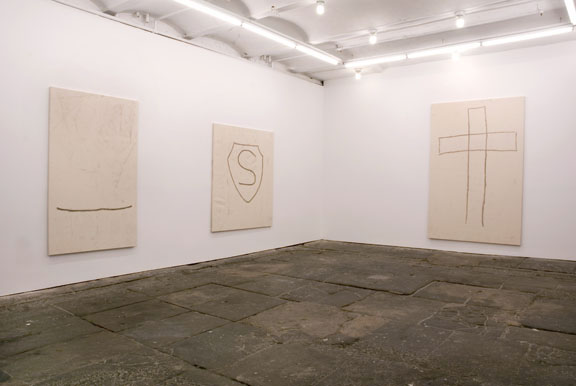
Schmagoo Paintings
Joe Bradley
CANADA - 55 Chrystie St, New York NY
25 October - 3 December 2008
For Joe Bradley's charming second show at CANADA, the modern world is encapsulated in the images of Superman's "S", the number "23" (possibly recalling Michael Jordan's uniform), a cross and other symbols -- some whole, some broken. The pictures emerge prehistoric, as black grease pencil doodles on unprimed canvases. The first work one encounters upon entering the gallery is a large canvas titled Schmutz Painting, devoid of any marking except a dusting of schmutz -- the Yiddish word for dirt. The title is a play on the exhibition title itself, Schmagoo, which Bradley thought sounded like the name of a Jewish superhero. Not coincidentally, there is schmutz on the five other works in the exhibition as well.
Through inscription, monument and other forms of material remembrance, past symbols and names outlive their time. Look closely, though, and the memories preserved transmogrify. They seem both familiar and obscure. The philosopher Walter Benjamin was riveted by this tension. For him, images and objects possessed an immanent power, and he considered how such power translated over time. He believed this history is collapsed into images, and it was the historian's job to rescue those which would resonate now. Writing from a Marxist perspective, he thought that by recovering and showing them again, the images could take on a kind of revolutionary potential. That potential comes from the viewer's critical distance and recognition. The moment we see a past image in a new form, like a painting, our past perception of the image merges with, and is transformed by, the present. Myths combine with contemporeneous specificities. New possibilities open up for exploring and changing the current tides of culture. Benjamin calls this the shock of the dialectical image. Bradley's painting may not exactly ignite new ways of thinking, but a weird scrawl of Michael Jordan's number is at least amusing. As Bradley explains in the press release, schmagoo is also old slang for heroin, which he uses as "a metaphor for the original creative act. The Word made Flesh. The transmutation of Schmagoo into Alchemical Gold." His vernacular -- childhood heroes, sports icons and associations -- has achieved a redemptive state. The pictures become our contemporary talismans.
Prior to this exhibition, Bradley's best known pieces were wall-mounted figures made up of monochrome canvases, resembling a convocation of Tetris shapes. They challenged the notion that as a minimal installation, these rectangular assortments ought to be read as abstract, both art historically and colloquially. His new work again considers minimalism, but also offers a perverted take on an imagined primitivism. As a whole, the exhibition falls somewhere on the continuum between lightly conceptual and prank. If an archaeologist scrutinized Bradley's work as seriously as he would a cave painting, he would most likely consider our society consumer-driven, shallow and a little silly. Bradley might shrug and laugh at him. The self-effacing tone of the exhibit is, in the end, more exciting than the work itself, though the banality of the paintings grew on me with a second gallery visit. Upon leaving, I felt lighter.
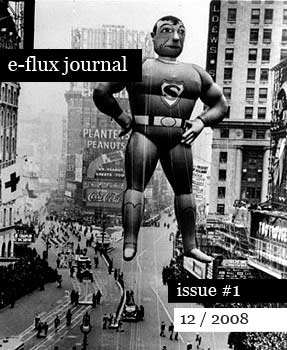
E-flux Journal #1 -- the fledgling publication's second output to date -- has just been released via E-flux's website. With a suite of texts matched to the otherwise commendable premier issue, E-flux Journal seems a likely candidate for a legacy of distributing print-standard and rigorous work, freely online. Among the suite of texts is this issue is Jan Verwoert's 10,000 word study on Joseph Beuys and the artist as healer, design collective Metahaven's discussion of "soft power" and protocol standardization, Simon Sheikh reflections on Craig Owens and the East Village of the 1980s and Dieter Lesage's contribution -- a kind of open letter to the newly appointed artistic director of documenta, one of Western Europe's foremost quinquennials of contemporary art. Staš Kleindienst, Carol Yinghua Lu and Nataša Petrešin-Bachelez have also contributed work appearing in this issue.
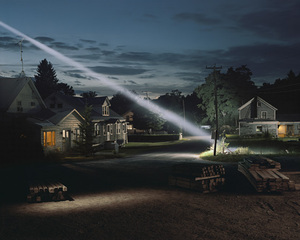
6:30pm Monday 8 December 2008
The Guggenheim Museum – 1071 Fifth Ave, New York Ny
$10
On Monday at the Guggenheim, curator of photography Jessica Blessing moderates a conversation between Catherine Opie and Gregory Crewdson. Opie and Crewdson will discuss their distinct approaches -- high-production values and carefully staged images in the case of the latter, documentary photography in the case of the former -- in relation to a common thematic interest in the American suburb. Catherine Opie's exhibition at the Guggenheim will remain on view through 7 January, 2009.
A blonde gives birth to a grown man on a bloody operating table. This bizarre picture drew a steady crowd during a recent benefit auction for the Gay & Lesbian Alliance Against Defamation. Such prolonged gazes were high praise; small wonder then that this picture won Troy Dunham and Jeff Eason a prize for best emerging artists in the photography category at GLAAD's 7th Annual OUTAuction NYC. The artists were stimulated by a visual pun on how drag queens "birth"; young boys discovering and giving form to the queen within. Through digital manipulation, the diva and the "oldborn" are actually played by the same model. So she's giving birth to himself?
The picture hits upon something deeper than gender games. After the initial hardwired jolt of seeing smears of blood, the scene turns out not to be as bad as it first appears. The doctors' posture is relaxed and their eyes convey the calm trance of a familiar procedure. The deliverer yelps on her phone, smiles widely and strikes a pose. The morphine bag drips. Only the emerging man screams but like an infant that doesn't understand it will fare fine in the unfamiliar.
This picture speaks to moments in which we -- as corny as it may sound -- give birth to a new self. Whether it's coming out of the closet, ending a long term relationship, or changing jobs, life transitions initially can feel bloody -- until acclimation puts things in perspective.
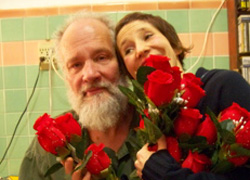
Flux Factory Auction Benefit
7-10pm Friday 5 December 2008
Hungarian Cultural - 447 Broadway, 5th Floor, New York NY
Filmmaker's Coop End of Year Benefit Screening
8-11pm Saturday 6 December 2008
Millennium Film Workshop - 66 E. 4th St, New York NY
This weekend two of New York's finer cultural organizations host fund raisers in Manhattan. Flux Factory, who until recently operated an exhibition and work space in Long Island City, will be presenting their annual Benefit and Silent Auction at the Hungarian Cultural Center. All auciton proceeds will go directly towards 2009 programming and will help Flux Factory find a new home, following their recent eviction and temporary virtuality. Flux Factory has over its 14 year history been at the center of many exhibitions, events and artists projects, as well as a dynamic group of friends and colleagues. The auction will feature work by Swoon, Johanna Billing, Paul Ramierz-Jonas, Trong Gia Nguyen and others. A preview of auction block items is available online.
On Saturday the Filmmaker's Coop hosts their annual End of Year Benefit Screening, at the historic Millennium Film Workshop. This year's program features works by Mike Kuchar, Robert Withers, Caroline Koebel and many others. The Coop has for more than 40 years been a critical part of New York's avant-garde and experimental cinema scenes, distributing, preserving, selling and exhibiting both historic and more recent moving image work.
WFMU Art Benefit at Printed Matter
Saturday 6 - Saturday 13 December 2008
Printed Matter - 195 10th Avenue, New York NY
Opening:
5-7pm Saturday 6 December 2008
Printed Matter - 195 10th Avenue, New York NY
This coming weekend, freeform radio station WFMU hosts an art benefit show and sale to raise funds for the construction of a new radio booster antenna in Manhattan, a project for which the FCC had granted permission to the Jersey City based station last year. Regularly broadcasting non-commercial original programming, WFMU celebrates its long standing relationship with the visual arts community with this exhibition and sale, bringing together a notable list of established producers who have created or donated and, in many cases, greatly reduced the prices of their works in order to encourage sales. All of the work shown will be available for purchase. The event offers an opportunity to support one of the most exciting and advanced platforms for creative radio making operating today, both online and off. Interestingly, all of the works exhibited will be offered for sale at fixed prices, offered explicitly by way of a non-auction sale structure, intended to allow easy entry to first time art buyers. In addition to an opening event at Printed Matter on the evening of 6 December, the ongoing exhibition will continue through 13 December at the store. A parallel online sale will feature art exclusive to web buyers, and will be accessible at http://art.wfmu.org/ after 6 December 2008.
Participating artists include Richard Prince, Olaf Breuning, Cindy Sherman, Andrea Robbins and Max Becher, Mike Kelley, Gelitin, Chris Johanson, Christian Marclay, Steve Powers, Swoon, Tom Burkhardt and many others.
ZINE
HOME
TIPS / COMMENTS
CATEGORIES
CONTRIBUTORS
- Greg Afinogenov
- B. Blagojevic
- Adda Birnir
- Susannah Edelbaum
- Julie Fishkin
- Paddy Johnson
- Jessica Loudis
- Christopher Reiger
- Andrew Robinson
- Peter J. Russo
- Blythe Sheldon
- S.C.Squibb
- Hrag Vartanian

